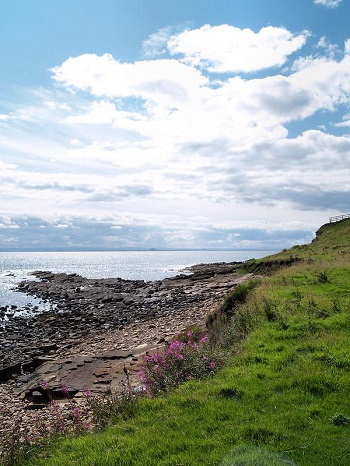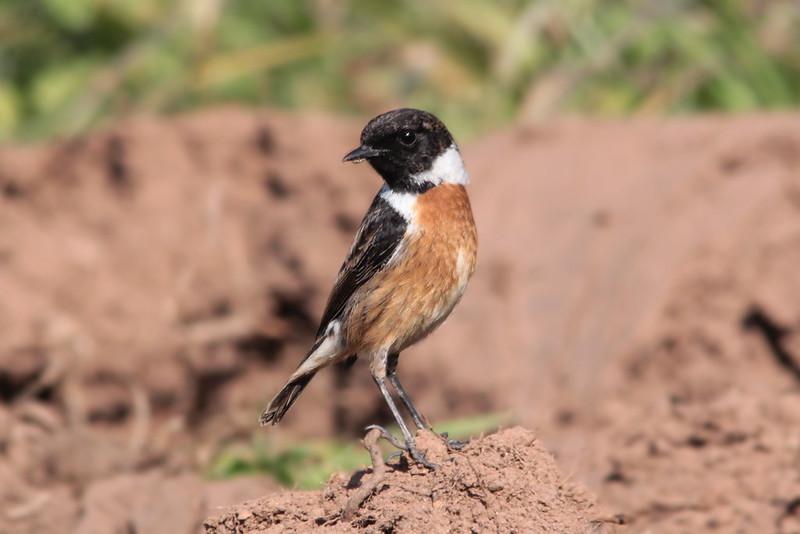Table of Contents
Sandwiched Between Firths

The Fife peninsula is situated on the east of Scotland and has over 100 miles of coastline that includes many beaches, cliffs and headlands. The peninsula lies between the Firth of Tay to the north and the Firth of Forth to the south, with the North Sea filling the gap in the middle. At its furthest point east, Fife is characterised by rolling countryside and small fishing villages, and this area is home to the Kilminning Coast. A wildlife reserve managed by the Scottish Wildlife Trust, the Kilminning Coast offers a range of habitats including grassland, wetland and coastal shrub.
It’s therefore a popular spot among wildlife, providing nesting sites for many small bird species. Some of the main attractions are the wildflowers that bloom from late spring into summer. These make a visit to the Kilminning Coast a colourful experience and there is a good coastal path and picnic area for visitors to get the most out of their trip. With the ocean dominating much of the area, it’s also perfect for sea views and marine life as well.
Passerine Paradise
The sweeping grassland habitats and untouched shrubby areas are a haven for small birds, with both resident species and migrants making the most of the Kilminning Coast. The majority of small birds that can be found here belong to the Passerine order – a group of birds known for communicating through song. Some of these birds choose to nest on the Fife coast and some examples to look out for here are Stonechats, Whitethroats and Linnets. Rare species also visit and this can make the reserve popular among birdwatchers, with occasional sightings of Red-Backed Shrike and Hawfinch.
One of the more common species, the Stonechat moves south during the winter but is prevalent during summer and provides a delightful soundtrack to the area with its unusual call. Their song is easy to identify and sounds like two pebbles being knocked together, hence the name of the species. Although often heard, they are harder to spot, tending to stay hidden among areas of tall grass. While calling, however, they prefer to sit near the tops of grass stems or in tall bushes to try and elevate their songs. This gives visitors the chance to spot them. The sexes differ in appearance, with females being mostly brown and males having a black head and an orange tinge to their throats and breasts. Top tip for seeing Stonechats on the Kilminning Coast: bring binoculars and watch for birds flitting around in tall grass.

Flowering Grasslands
The grasslands of the Kilminning Coast are not just great for songbirds, they also provide ideal habitat for rare plants and wildflowers. Be sure to look out for the white flowers of the Scurvy-Grass, a plant named for the high vitamin C content of the leaves which were widely eaten by sailors on long journeys. Additional plant life includes Purple Milk Vetch and Northern Marsh Orchids, which can be seen around the wetland areas. Both are uncommon species and are beautiful flowering plants. The Bluebells of the Kilminning Coast are another colourful sight in late spring and the area can be worth a visit purely for this reason.
While many of these sights are terrestrial, there are of course a variety of things to see in and around the water. Guillemots and Razorbills nest on some of the enclosed areas on the higher cliffs and will be present in large numbers during the spring. Offshore, Cormorants might be seen fishing and Eider Ducks are also seasonally spotted. Visitors will often be blessed with opportunities to see seals bobbing in the bays and porpoises travelling along the coast. For these sights, as well as opportunities to see wildflowers and grassland habitats that are rare elsewhere in Scotland, the Kilminning Coast can be a great destination.
